Side Strain
Updated:
(Also known as Back Side Strain, Abdominal Side Strain, Internal Oblique Strain, Internal Oblique Tear, Torn Internal Oblique Muscle)
What is a side strain?
A side strain is a condition that is commonly seen in cricket fast bowlers and is characterized by a tear in one of the side abdominal muscles (known as the “internal oblique”) where it attaches to the lower ribs.
The chest comprises of 12 rib bones on each side of the body. Each rib attaches to the spine at the back of the body and then travels around to the front of the chest (figure 1). The top 7 ribs attach to the sternum, the 8th to 10 ribs attach to the ribs above via cartilage and the 11th and 12th ribs are known as ‘floating’ ribs as they are unattached at the front of the chest.
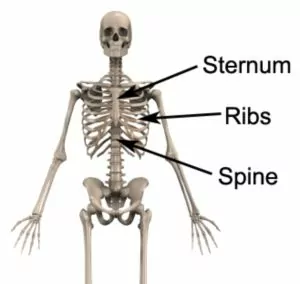
Numerous muscles of the abdomen, shoulder girdle and back attach to one or more ribs. The internal oblique muscle primarily attaches above, to the ribs and rib cartilages of ribs 8 to 12 and below to the pelvis (iliac crest) and strong connective tissue of the lower back (thoracolumbar fascia). It acts to side bend the trunk and rotate the trunk to the same side.
During contraction or stretch of the internal oblique, tension is placed through the muscle. When this tension is excessive due to too much repetition or high force, the internal oblique muscle can tear. This is known as a side strain. Side strains typically involve tearing of the internal oblique muscle at its rib or rib cartilage insertion on the side of the body at ribs 9, 10 or 11.
In addition to cricket fast bowlers, side strains also sometimes occur in other sports, such as javelin throwers, rowers and ice hockey players.
Cause of a side strain
A side strain can occur either suddenly (e.g. from a forceful bowl, particularly if not warmed up properly) or gradually over time from excessive or repetitive activity (e.g. overtraining). A side strain typically occurs due to a sudden contraction of the internal oblique muscle when it is in a position of stretch (such as during the fast bowling action).
Signs and symptoms of a side strain
In cricket fast bowlers, side strains tend to occur on the non-bowling arm side of the body. Patients typically experience a sudden, sharp pain or pulling sensation in the side of the chest (in the region of the lower ribs) or abdomen during the provocative activity. Pain typically occurs suddenly (e.g. during a forceful bowl), but can also occur gradually over time (e.g. over the course of a match or training session). In minor cases, the patient may be able to continue the activity only to have an increase in symptoms upon cooling down. In more severe cases the patient may be unable to continue the activity and will often have to cease sports participation.
Patients with a side strain typically experience pain that increases with activities that place strain on the internal oblique muscle. These activities may include: bowling, throwing, heavy lifting, rowing, side sit ups, twisting, turning or side bending. It is also common for patients to experience pain or stiffness after these activities with rest, especially upon waking in the morning (or at night). Patients with this condition may also experience swelling, muscle spasm, weakness and bruising in the side abdominal region. Symptoms typically increase on firmly touching the affected region of the muscle or ribs or when performing a side stretch. In more severe cases, deep breathing, laughing, coughing or sneezing may also provoke symptoms.
Diagnosis of a side strain
A thorough subjective and objective examination from a physiotherapist is usually sufficient to diagnose a side strain. Further investigations, such as a MRI or ultrasound, are sometimes required to confirm diagnosis, determine the severity of injury and monitor healing.
Prognosis of a side strain
With appropriate physiotherapy management, most patients with a side strain can make a full recovery (i.e. return to sport or normal activities) in a period of 4-6 weeks. In more severe cases, recovery may take longer. It is important to note that there is a high recurrence rate with side strains. Often symptoms may appear to resolve within the first couple of weeks only for bowlers to re-injury themselves upon prematurely returning to sport. It is therefore advised that patients with a side strain complete a full rehabilitation program closely guided by their treating physiotherapist, and a thorough fitness test, prior to returning to sport. In rare cases, some patients with a side strain may experience ongoing or recurrent symptoms or complications which may require further management.
Treatment for a side strain

Members Only ContentBecome a PhysioAdvisor Member to gain full access to this exclusive content. For more details see Become a Member. Already a member? Login Now
Contributing factors to the development of a side strain

Members Only ContentBecome a PhysioAdvisor Member to gain full access to this exclusive content. For more details see Become a Member. Already a member? Login Now
Physiotherapy for a side strain

Members Only ContentBecome a PhysioAdvisor Member to gain full access to this exclusive content. For more details see Become a Member. Already a member? Login Now
Other intervention for a side strain

Members Only ContentBecome a PhysioAdvisor Member to gain full access to this exclusive content. For more details see Become a Member. Already a member? Login Now
Exercises for a side strain
The following exercises are commonly prescribed to patients with a side strain. You should discuss the suitability of these exercises with your physiotherapist prior to beginning them. Generally, they should be performed 3 times daily once the physiotherapist has indicated it is safe to do so and only provided they do not cause or increase symptoms.
Your physiotherapist can advise when it is appropriate to begin the initial exercises and eventually progress to the intermediate and advanced exercises. As a general rule, addition of exercises or progression to more advanced exercises should take place provided there is no increase in symptoms.
Initial Exercises
Deep Breathing
Begin sitting or standing tall with your back and neck straight (figure 2). Breathe in as deeply as possible without increasing symptoms and then relax. Focus on breathing with your lower lungs (instead of elevating your shoulders) and allow your stomach to gently expand. Repeat 5 times.
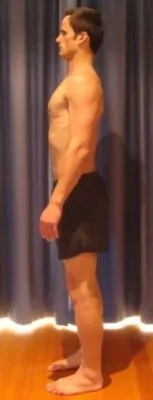
Foam Roller Stretch
Place a foam roller under your upper back as demonstrated (figure 3). Breathe normally keeping your back and neck relaxed. Hold this position for 15 – 90 seconds provided it is comfortable and does not cause pain. This exercise can be progressed by taking your arms overhead.
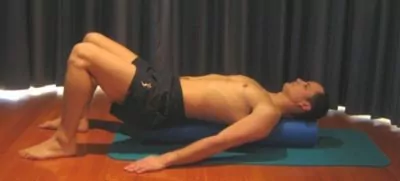
Rotation in Lying
Begin this exercise lying on your back as demonstrated (figure 4). Slowly take your knees from side to side as far as you can go without pain and provided you feel either nothing, or, no more than a mild to moderate stretch. Repeat 10 times to each side provided the exercise is pain free.
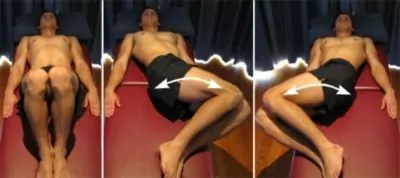
More Initial exercises

Members Only ContentBecome a PhysioAdvisor Member to gain full access to this exclusive content. For more details see Become a Member. Already a member? Login Now
Intermediate Exercises

Members Only ContentBecome a PhysioAdvisor Member to gain full access to this exclusive content. For more details see Become a Member. Already a member? Login Now
Advanced Exercises

Members Only ContentBecome a PhysioAdvisor Member to gain full access to this exclusive content. For more details see Become a Member. Already a member? Login Now
Rehabilitation Protocol for a side strain

Members Only ContentBecome a PhysioAdvisor Member to gain full access to this exclusive content. For more details see Become a Member. Already a member? Login Now
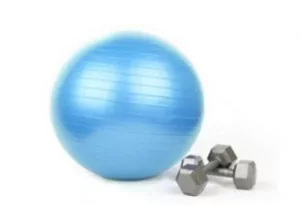
Physiotherapy products for a side strain
Some of the most commonly recommended products by physiotherapists to hasten healing and speed recovery in patients with this condition include:
To purchase physiotherapy products for this condition, click on one of the above links or visit the PhysioAdvisor Shop.
 Find a Physio for a side strain
Find a Physio for a side strain
Find a physiotherapist in your local area who can treat this condition.
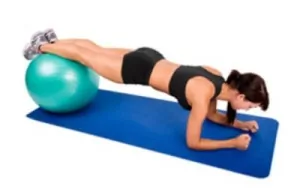
More Exercises
- View more Upper Back Stretches.
- View more Abdominal Stretches.
- View more Abdominal Strengthening Exercises.
- View more Core Exercises.
- View more Pilates Exercises.
 More Information
More Information
- View detailed information on when to use Ice or Heat.
- View detailed information on initial injury management and the R.I.C.E. Regime.
- Read about Posture.
- View detailed information on Warming Up and Cooling Down.
- View detailed information on Returning to Sport.
- View detailed information on Returning to Running.
- View our Upper Back & Chest Diagnosis Guide.
Become a PhysioAdvisor Member
-
 Individual Membership (12 Months)$59.95 for 1 year
Individual Membership (12 Months)$59.95 for 1 year -
 Individual Membership (3 Months)$39.95 for 3 months
Individual Membership (3 Months)$39.95 for 3 months -
 Individual Membership (Yearly)$49.95 / year
Individual Membership (Yearly)$49.95 / year -
 Individual Membership (Monthly)$15.95 / month
Individual Membership (Monthly)$15.95 / month

Link to this Page
If you would like to link to this article on your website, simply copy the code below and add it to your page:
<a href="https://physioadvisor.com.au/injuries/upper-back-chest/side-strain”>Side Strain – PhysioAdvisor.com</a><br/>PhysioAdvisor offers detailed physiotherapy information on a Side Strain including: causes, symptoms, diagnosis, treatment, exercises, rehabilitation, physiotherapy products and more.
Return to the top of Side Strain.






